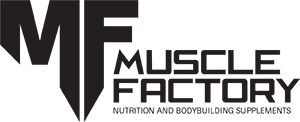Why You’re Not Building Muscle (and How to Fix It)
Building muscle takes more than just hard work in the gym. While you might be putting in the hours, other factors like nutrition, recovery, and workout structure are essential to seeing real gains. Let’s dive into four key reasons why you might not be building muscle and how you can fix them to get back on track.
1. Your Post-Workout Nutrition is Lacking
Furthermore, one of the biggest mistakes people make is neglecting proper nutrition after their workout. After lifting weights, your muscles are in a state of repair, and without the right nutrients, your body won’t be able to recover and grow effectively. Many gym-goers forget about the importance of this “anabolic window” where muscles need protein and carbohydrates to replenish and repair.
How to fix it:
Within 30-60 minutes after your workout, consume a meal or shake that’s rich in protein and carbs. Whey protein is an excellent choice because it digests quickly, delivering essential amino acids to your muscles right when they need them most. Pair your protein with some carbs to help restore glycogen levels and fuel muscle recovery. Although, a shake with 25-30 grams of protein and a banana or some oats makes for a solid post-workout meal.
2. You’re Not Getting Enough Rest and Recovery
When it comes to building muscle, rest is just as important as your workouts. During intense weightlifting, you create small tears in your muscle fibers, and these fibers repair themselves during recovery periods—becoming bigger and stronger in the process. If you’re not resting enough between sessions or getting enough sleep, your muscles can’t recover, which halts growth.
How to fix it:
Prioritize at least one or two full rest days per week to allow your muscles to heal and rebuild. It’s also critical to focus on quality sleep—aim for 7-9 hours per night. During sleep, your body releases growth hormone, which plays a vital role in muscle recovery and development. Additionally, consider integrating active recovery, like light stretching or yoga, to keep your muscles limber and improve circulation.
3. You’re Not Eating Enough Calories
A calorie deficit can be a major roadblock to building muscle. If your body isn’t receiving more energy than it expends, it won’t have enough fuel to build new muscle. Many people fall into the trap of eating the same amount, or even less, when they start working out harder, which hinders their ability to grow muscle.
How to fix it:
For muscle growth, you need to eat in a calorie surplus. Aim for a surplus of 250-500 calories per day over your maintenance level. Make sure your diet is rich in whole foods like lean proteins, complex carbohydrates, and healthy fats to ensure your muscles are getting the nutrients they need to grow. Tracking your daily caloric intake through an app or food diary can be helpful to ensure you’re consistently hitting your surplus target.
4. Your Workouts Lack Progressive Overload
Muscle growth hinges on progressive overload—the principle that you must gradually increase the demand placed on your muscles to continue making gains. If you’ve been doing the same exercises with the same weights and reps for weeks or months, your muscles are no longer being challenged, and growth stalls.
How to fix it:
Incorporate progressive overload by increasing your weights, adding more reps or sets, or altering the structure of your workouts. For example, if you’ve been bench pressing 100 pounds for 10 reps, try increasing the weight to 105 pounds and aim for the same number of reps. You can also try reducing rest periods between sets to increase the intensity of your sessions. By continually challenging your muscles, you force them to adapt and grow.
Conclusion: Fine-Tuning the Details to Maximize Gains
The journey to building muscle is about much more than just lifting weights. It’s a complex process that requires attention to your diet, rest, and workout progression. If you’re struggling to see results, it’s time to assess your habits. Are you eating enough calories and protein? Maybe your workouts challenging enough? Are you giving your muscles ample recovery time?
By making these adjustments, you’ll create the optimal environment for muscle growth and start seeing the results of your hard work. Stay patient, consistent, and committed, and your efforts will pay off.
FAQ
1. How long does it take to see muscle growth?
Muscle growth can usually be observed within 6-12 weeks, depending on your diet, workout intensity, and recovery habits.
2. What’s better for muscle building: heavy weights or high reps?
Both methods can work. For hypertrophy, focus on lifting moderate to heavy weights for 8-12 reps. The key is to progressively overload your muscles.
3. Can I build muscle on a vegetarian or vegan diet?
Absolutely! Ensure you’re eating enough plant-based protein sources like lentils, beans, and tofu. You can also supplement with a plant-based protein powder to meet your daily protein goals.
4. Is it bad to do cardio while trying to build muscle?
Moderate cardio won’t hurt your muscle-building goals as long as you’re eating enough calories to support both muscle growth and energy expenditure. Just be sure not to overdo it, as excessive cardio can hinder gains.
5. How much water should I drink for optimal muscle growth?
Staying hydrated is crucial for muscle performance and recovery. Aim to drink at least 8-10 glasses of water per day, more if you’re sweating heavily during workouts.
6. How often should I train to build muscle?
Training 3-5 times a week is generally sufficient for muscle growth, as long as you’re focusing on different muscle groups and allowing time for recovery.
WHY AM I NOT BUILDING MUSCLE?!

William Caldwell |
